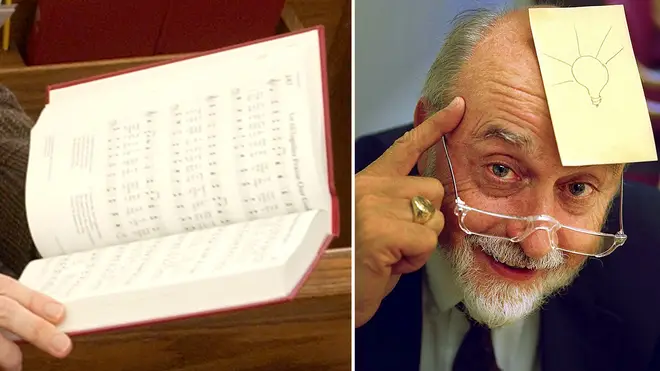On Air Now
Calm Classics with Ritula Shah 10pm - 1am
16 June 2022, 12:29 | Updated: 16 June 2022, 16:39

How a failed invention and a choir hymnbook led to one of the most iconic office staples of the 20th century.
The year is 1968, and in a laboratory in the midwestern state of Minnesota, US, Dr Spencer Silver is hard at work, attempting to develop an extra-strong adhesive for 3M, then called the Minnesota Mining and Manufacturing Company.
Instead of the super-sticky substance he had hoped to create, Silver was left with a ‘low-tack’ adhesive, albeit a reusable one which could be stuck and unstuck when pressure was applied.
Keen not to let his time and efforts go to waste, Dr Silver searched far and wide for a use for what he called his “solution without a problem”.
For five years, he brought his invention to the table at various seminars and summits, but ultimately failed to make his idea stick.
Read more: 15 of the greatest classical choral works ever written

Little did Silver know, one of his colleagues at 3M had attended one of these many seminars, and was interested to find out more about the oddly-behaving adhesive.
Arthur ‘Art’ Fry, who worked to develop new products at 3M, was a keen singer, and sang in his church choir in his downtime.
Fry often used small slips of paper to mark important pages in his hymnbook, but with nothing to keep them in place they frequently fell out, causing Fry to lose his place and costing him precious time.
One Sunday in 1973, during choir practice, he remembered Dr Silver’s seminar. He wondered if he could somehow coat his bookmarks with the adhesive in a way that could help save his page more effectively, without damaging the delicate, wafer-thin pages of his hymnbook.
Read more: Mystery of 19th-century choirboy, who hid ‘remember me’ plea in church pew, is solved

Handel's Zadok the Priest – Royal Liverpool Philharmonic Orchestra
Returning to work the following day, he asked if he could use a sample of Dr Silver’s adhesive to test his idea.
In the spirit of encouraging creative collaboration and inventiveness, 3M operate a “permitted bootlegging” initiative, which Fry made use of to further develop his design.
Using scrap paper borrowed from the lab next door – which just so happened to be canary yellow – Fry experimented with different ways of applying the adhesive to the paper, eventually settling on a strip of glue along one edge of the paper: enough to allow it to stick, without any tackiness left on the part of the bookmark that extended from the page.
Silver and Fry later began leaving each other notes, stuck to various surfaces around the office. It was then that they realised the full potential of their discovery.

Gloriana Choir performs Imogen Holst's O Years and Age
The pair took their genius invention to the management at 3M, but it took a little effort to get them on board. In 1977, the company began testing product sales in four US cities, marketing the sticky notes as ‘Press ‘n Peel’ bookmarks.
The results were disheartening, but the following year the marketing department came up with a new strategy: give the product to consumers directly, to try out for free. 94 percent of those who tried the product then said they would buy it. And so the Post-it Note’s success was guaranteed.
On April 6 1980, Post-it Notes as we know them hit the shelves, and a year later they were also launched in Canada and Europe. That same year, 3M named the Post-it its Outstanding New Product, and awarded the development team the ‘Golden Step Award’ in both 1980 and 1981, a recognition given to teams at 3M “who create major new products that are significantly profitable”.
Even with such accolades to his name, Fry remained humble, saying “My biggest reward is to see so many people use and appreciated my product”.
In 2010, Art Fry and Dr Spencer Silver were inducted into the US National Inventors Hall of Fame, the greatest recognition for two previously unsung heroes.
And now, nearly 50 years after its invention, the story behind the Post-it Note’s creation goes to show that inspiration can strike in the most unlikely of places.